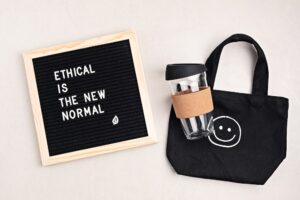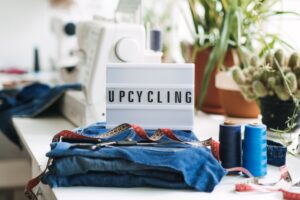The fashion industry has long been associated with overproduction, waste, and unsustainable sourcing — but change is underway. Increasingly, luxury brands are shifting towards eco-friendly materials and vegan leather alternatives in bag design. This shift reflects not only consumer demand for ethical products but also the industry’s recognition of its responsibility to reduce environmental harm.
Below, we’ll explore the most promising sustainable materials shaping luxury fashion, highlight designers embracing vegan leather, and look ahead to trends redefining what luxury means in a climate-conscious world.
Eco-Friendly Materials for Bag Design
Luxury doesn’t have to come at the planet’s expense. These eco-friendly materials are leading the way:
Organic Cotton
- Grown without synthetic pesticides or fertilizers.
- Biodegradable, renewable, and often used for linings and straps.
- Better for soil health and farmers’ long-term resilience.
Hemp
- Naturally pest-resistant and grown without heavy inputs.
- Durable, lightweight, and strong — ideal for structured bags.
- Regenerates soil and requires less water than conventional crops.
Recycled Materials
- Made from discarded fishing nets, PET bottles, or textile waste.
- Reduces landfill pressure and marine pollution.
- Supports a circular economy by turning waste into high-value fashion.
Cork
- Harvested from cork oak bark without harming trees.
- Lightweight, water-resistant, and biodegradable.
- A renewable option that regenerates naturally.
Piñatex
- Created from pineapple leaf fibers (an agricultural byproduct).
- Diverts waste while providing extra income to farmers.
- Soft yet durable, making it a popular vegan leather alternative.
Mushroom Leather (Mycelium)
- Grown from mushroom root systems in controlled environments.
- Biodegradable, low-energy, and versatile.
- Seen as one of the most scalable innovations in next-gen fashion materials.
Luxury Designers Embracing Vegan Leather
Several pioneering designers have already brought vegan leather to the luxury stage:
- Stella McCartney – A leader in sustainable luxury, famous for the Falabella bag made with vegan leather.
- Vivienne Westwood – Incorporates recycled and vegan leathers into bold, statement designs.
- Gabriela Hearst – Known for cactus-based leather alternatives and other low-impact materials.
- JW PEI – Uses recycled plastic bottles and vegan leather in minimalist designs.
- Angela Roi – Exclusively produces vegan leather bags with a focus on craftsmanship and ethical sourcing.
Benefits of Eco-Friendly Materials in Fashion
Switching to sustainable materials brings wide-ranging benefits:
- Lower environmental footprint – Less deforestation, reduced water use, fewer emissions.
- Ethical sourcing – Cruelty-free and often tied to fair-trade supply chains.
- Durability – Materials like hemp and cork offer long-lasting strength.
- Design versatility – Vegan leather and plant-based textiles can be styled into both classic and modern luxury designs.
Future Trends in Sustainable Luxury Fashion
Luxury fashion is poised to move even further toward sustainability, with innovations such as:
- Biodegradable materials – Designed to break down naturally at end-of-life.
- Closed-loop systems – Recycling textiles back into new garments and accessories.
- Regenerative sourcing – Materials grown in ways that restore ecosystems.
- Next-gen leathers – Lab-grown or plant-based materials that replicate leather’s look and feel without its ecological cost.
Final Thoughts
Luxury fashion is redefining itself around sustainability. From organic fibers and recycled plastics to vegan leather alternatives like Piñatex and mushroom leather, the industry is proving that elegance can coexist with responsibility.
As consumers, we play a vital role in shaping this future. Choosing eco-friendly bags supports designers who invest in ethical materials, drives demand for circular practices, and ensures that luxury no longer comes at the expense of ecosystems.
Luxury, after all, should mean longevity, quality, and care — not waste.









Reader Interactions